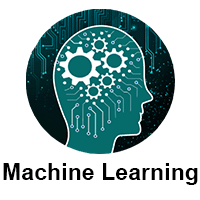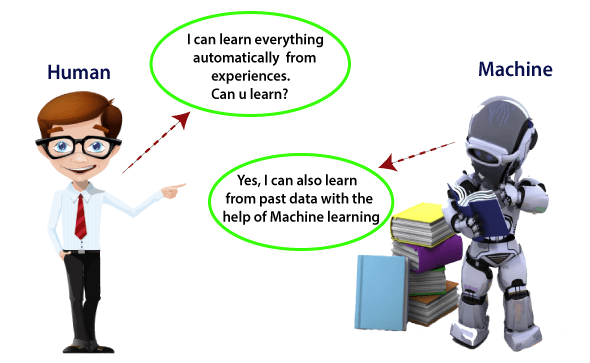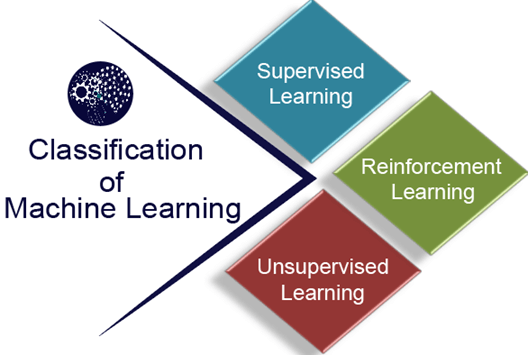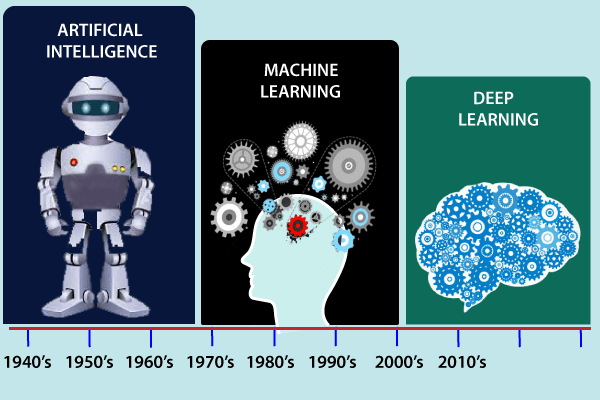Machine Learning Tutorial
The Machine Learning Tutorial covers both the fundamentals and more complex ideas of machine learning. Students and professionals in the workforce can benefit from our machine learning tutorial. A rapidly developing field of technology, machine learning allows computers to automatically learn from previous data. For building mathematical models and making predictions based on historical data or information, machine learning employs a variety of algorithms. It is currently being used for a variety of tasks, including speech recognition, email filtering, auto-tagging on Facebook, a recommender system, and image recognition. You will learn about the many different methods of machine learning, including reinforcement learning, supervised learning, and unsupervised learning, in this machine learning tutorial. Regression and classification models, clustering techniques, hidden Markov models, and various sequential models will all be covered. What is Machine LearningIn the real world, we are surrounded by humans who can learn everything from their experiences with their learning capability, and we have computers or machines which work on our instructions. But can a machine also learn from experiences or past data like a human does? So here comes the role of Machine Learning. 
Introduction to Machine Learning A subset of artificial intelligence known as machine learning focuses primarily on the creation of algorithms that enable a computer to independently learn from data and previous experiences. Arthur Samuel first used the term "machine learning" in 1959. It could be summarized as follows: Without being explicitly programmed, machine learning enables a machine to automatically learn from data, improve performance from experiences, and predict things. Machine learning algorithms create a mathematical model that, without being explicitly programmed, aids in making predictions or decisions with the assistance of sample historical data, or training data. For the purpose of developing predictive models, machine learning brings together statistics and computer science. Algorithms that learn from historical data are either constructed or utilized in machine learning. The performance will rise in proportion to the quantity of information we provide. A machine can learn if it can gain more data to improve its performance. How does Machine Learning workA machine learning system builds prediction models, learns from previous data, and predicts the output of new data whenever it receives it. The amount of data helps to build a better model that accurately predicts the output, which in turn affects the accuracy of the predicted output. Let's say we have a complex problem in which we need to make predictions. Instead of writing code, we just need to feed the data to generic algorithms, which build the logic based on the data and predict the output. Our perspective on the issue has changed as a result of machine learning. The Machine Learning algorithm's operation is depicted in the following block diagram: 
Features of Machine Learning:
Need for Machine LearningThe demand for machine learning is steadily rising. Because it is able to perform tasks that are too complex for a person to directly implement, machine learning is required. Humans are constrained by our inability to manually access vast amounts of data; as a result, we require computer systems, which is where machine learning comes in to simplify our lives. By providing them with a large amount of data and allowing them to automatically explore the data, build models, and predict the required output, we can train machine learning algorithms. The cost function can be used to determine the amount of data and the machine learning algorithm's performance. We can save both time and money by using machine learning. The significance of AI can be handily perceived by its utilization's cases, Presently, AI is utilized in self-driving vehicles, digital misrepresentation identification, face acknowledgment, and companion idea by Facebook, and so on. Different top organizations, for example, Netflix and Amazon have constructed AI models that are utilizing an immense measure of information to examine the client interest and suggest item likewise. Following are some key points which show the importance of Machine Learning:
Classification of Machine LearningAt a broad level, machine learning can be classified into three types:

1) Supervised LearningIn supervised learning, sample labeled data are provided to the machine learning system for training, and the system then predicts the output based on the training data. The system uses labeled data to build a model that understands the datasets and learns about each one. After the training and processing are done, we test the model with sample data to see if it can accurately predict the output. The mapping of the input data to the output data is the objective of supervised learning. The managed learning depends on oversight, and it is equivalent to when an understudy learns things in the management of the educator. Spam filtering is an example of supervised learning. Supervised learning can be grouped further in two categories of algorithms:
2) Unsupervised LearningUnsupervised learning is a learning method in which a machine learns without any supervision. The training is provided to the machine with the set of data that has not been labeled, classified, or categorized, and the algorithm needs to act on that data without any supervision. The goal of unsupervised learning is to restructure the input data into new features or a group of objects with similar patterns. In unsupervised learning, we don't have a predetermined result. The machine tries to find useful insights from the huge amount of data. It can be further classifieds into two categories of algorithms:
3) Reinforcement LearningReinforcement learning is a feedback-based learning method, in which a learning agent gets a reward for each right action and gets a penalty for each wrong action. The agent learns automatically with these feedbacks and improves its performance. In reinforcement learning, the agent interacts with the environment and explores it. The goal of an agent is to get the most reward points, and hence, it improves its performance. The robotic dog, which automatically learns the movement of his arms, is an example of Reinforcement learning. Note: We will learn about the above types of machine learning in detail in later chapters.History of Machine LearningBefore some years (about 40-50 years), machine learning was science fiction, but today it is the part of our daily life. Machine learning is making our day to day life easy from self-driving cars to Amazon virtual assistant "Alexa". However, the idea behind machine learning is so old and has a long history. Below some milestones are given which have occurred in the history of machine learning: 
The early history of Machine Learning (Pre-1940):
The era of stored program computers:
Computer machinery and intelligence:
Machine intelligence in Games:
The first "AI" winter:
Machine Learning from theory to reality
Machine Learning at 21st century2006:
2007:
2008:
2009:
2010:
2011:
2012:
2013:
2014:
2015:
2016:
2017:
Machine Learning at present:The field of machine learning has made significant strides in recent years, and its applications are numerous, including self-driving cars, Amazon Alexa, Catboats, and the recommender system. It incorporates clustering, classification, decision tree, SVM algorithms, and reinforcement learning, as well as unsupervised and supervised learning. Present day AI models can be utilized for making different expectations, including climate expectation, sickness forecast, financial exchange examination, and so on. PrerequisitesBefore learning machine learning, you must have the basic knowledge of followings so that you can easily understand the concepts of machine learning:
AudienceOur Machine learning tutorial is designed to help beginner and professionals. ProblemsWe assure you that you will not find any difficulty while learning our Machine learning tutorial. But if there is any mistake in this tutorial, kindly post the problem or error in the contact form so that we can improve it.
Next TopicApplications of Machine Learning
|
 For Videos Join Our Youtube Channel: Join Now
For Videos Join Our Youtube Channel: Join Now
Feedback
- Send your Feedback to [email protected]
Help Others, Please Share










